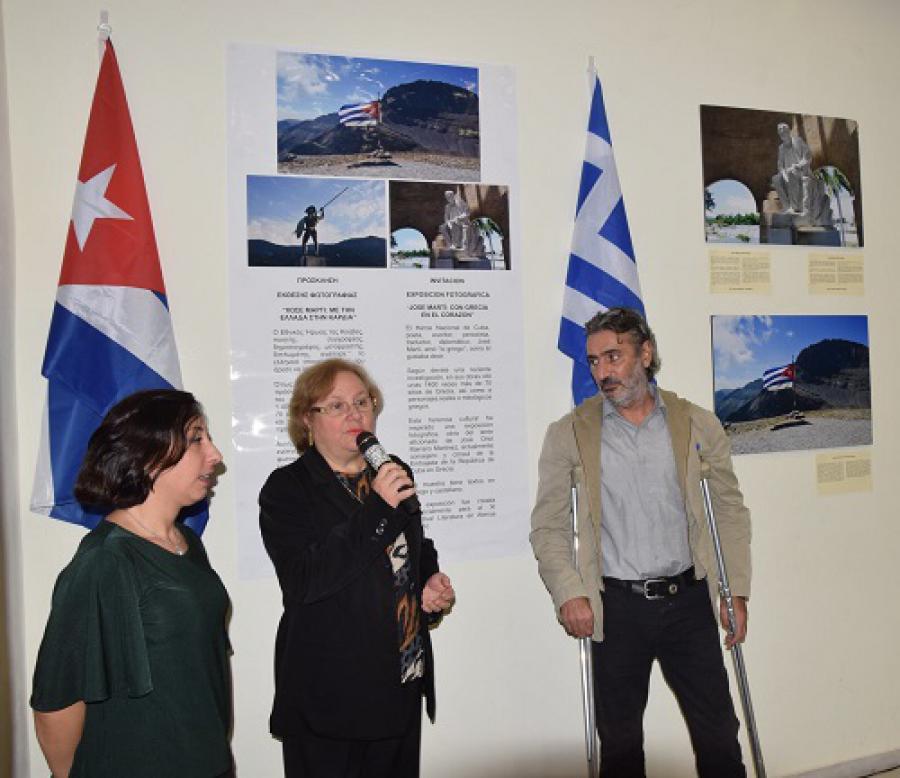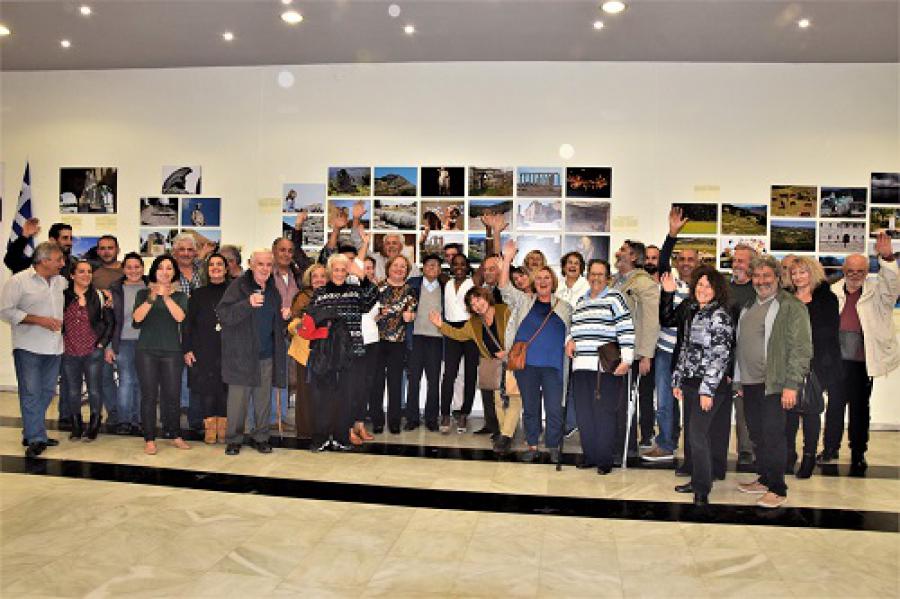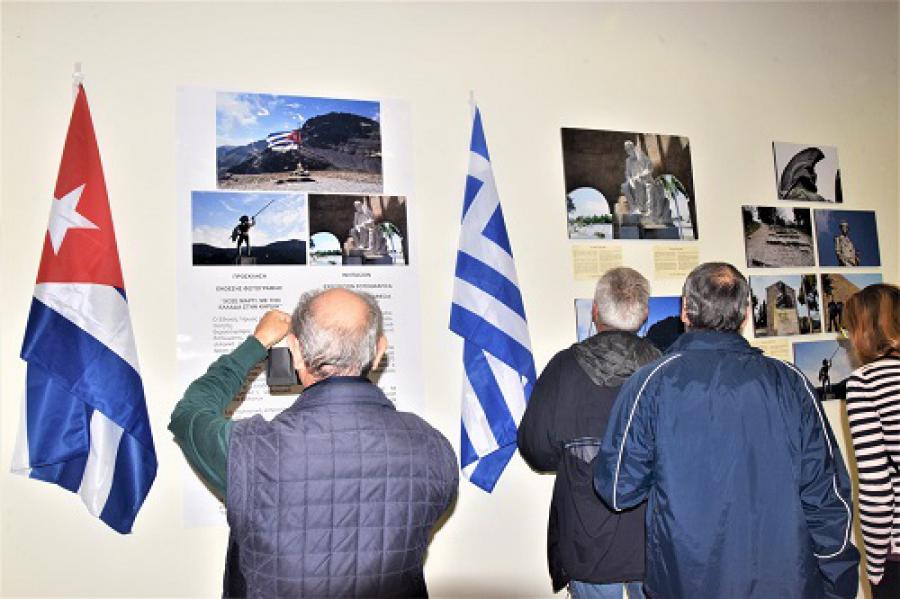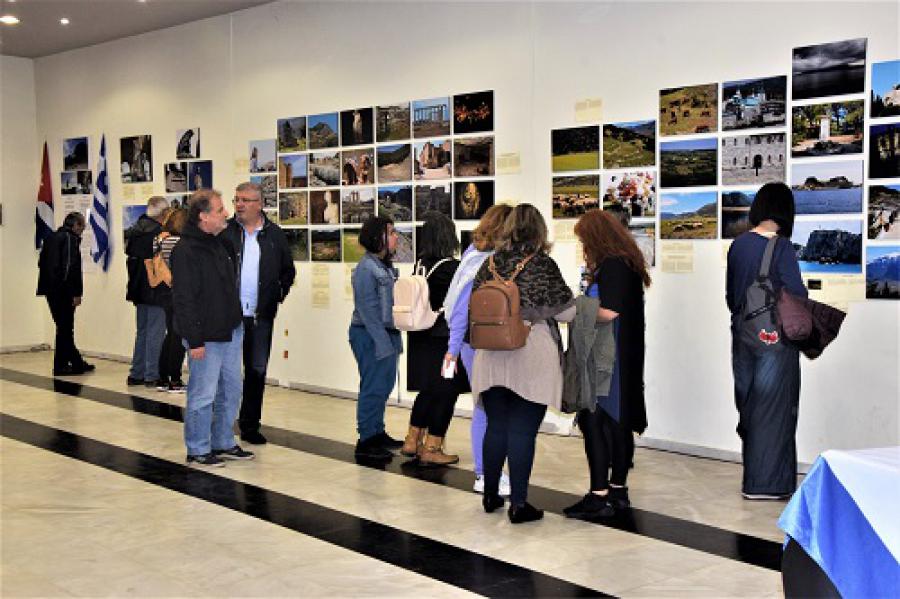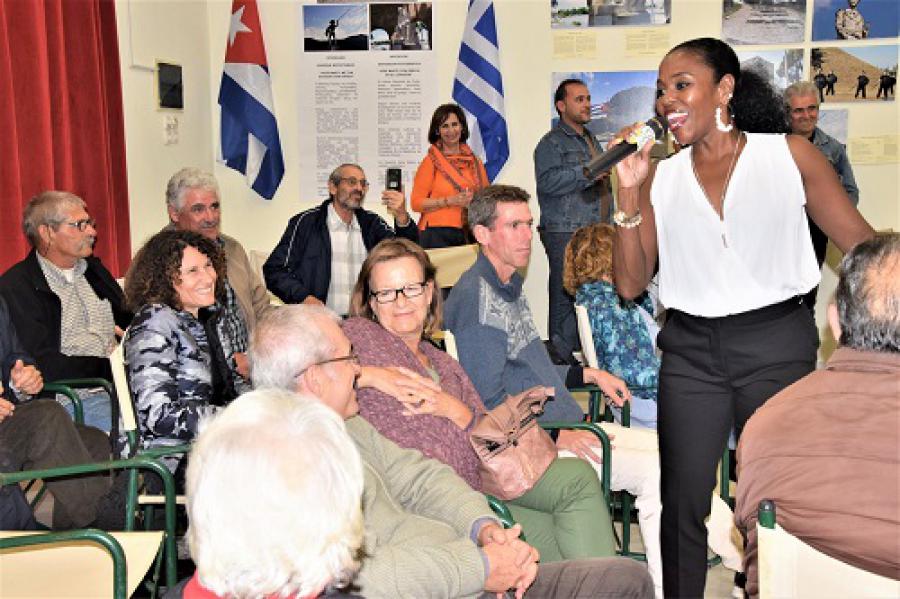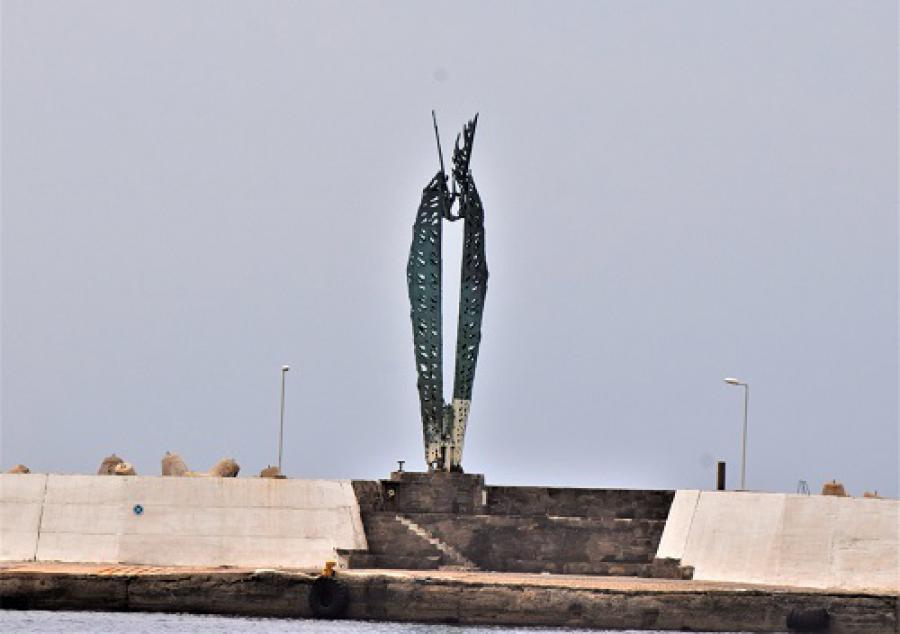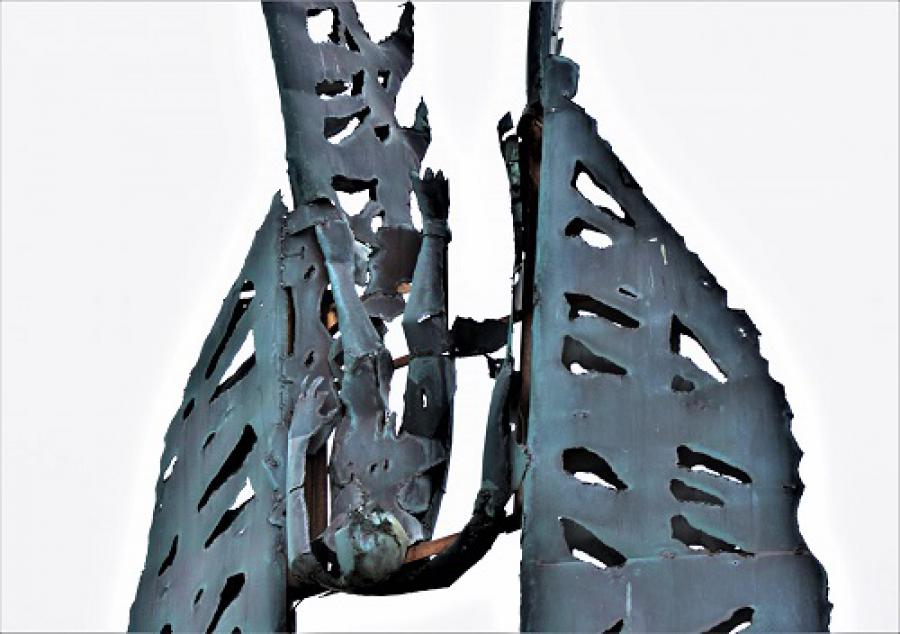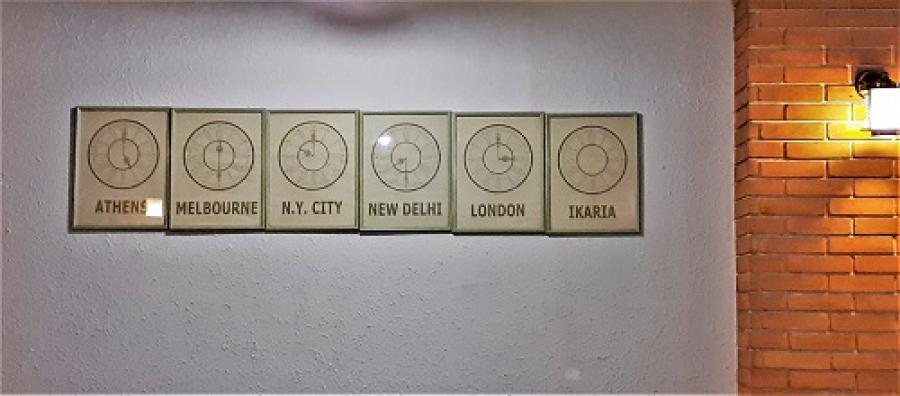(Taken from Facebook Oriol Marrero, counselor of the Embassy of Cuba in Greece)
XIII part. Island of Icaría. Photographic exhibition “José Martí: with Greece in the heart”. November 15, 2019.
Icaría is an island located northeast of the Aegean Sea, whose name is associated with that of Icarus, a famous mythological character and one of the sons of the Athenian architect Daedalus, renowned for having been the builder of the famous palace labyrinth of King Minos on the island of Crete. The labyrinth of the palace of Knossos had the function of enclosing the Minotaur, a monstrous animal half bull and half man, the result of the carnal relationship between Queen Pasiphae – wife of Minos – and a bull, a revenge imposed on him by the god Poseidon to King Minos, for having offended him.
After Daedalus built the complicated passageways in the palace of Knossos, King Minos locked the Minotaur inside him, and so that no one would know how to escape he decided to lock up Daedalus along with his son Icarus. After a long time and looking for a way to escape, the architect comes up with the idea of building wings from beeswax and bird feathers, in order to be able to fly like birds, the only possible way to escape with his son. .
Therefore, wings of wax and feathers were built. Daedalus alerted his son Icarus not to fly too high, because he would get too close to the sun, causing the wax on his wings to melt. The same, not to fly too low, because if the wings got wet they would be very heavy. Icarus was respectful of his father’s advice, flying to his side. But only at the beginning. Then he began to fly higher and higher, and forgetting the advice of his father, he stuck to the sun. The wax from his wings melted, Icarus fell into the sea. And he drowned. His father picked him up and buried him next to the small island where he had fallen – some versions say that on the island itself – which would later take his name: Icaría.
The Cuban National Hero José Martí with total certainty knew this myth, since he referred at least three times in his journalistic and literary work to the character of Icarus. He did not speak of the geographical site itself, that is to say of the island of Icaría, he spoke of Icarus, almost a gentilicio, in reverse.
On August 15, 1883, Martí published a relevant article in the Buenos Aires newspaper La Nación, where he mentions Ícaro. It is late, and for the sake of not extending ourselves more than necessary, it will be the only mention of Icarus from Marti to which we will refer. The other two took place in his work El poema del Niagara (The poem to Niagara /1883), and finally in its publication of February 4 and 5, 1887, also in La Nación, where it refers to the death of a former North American president. The three works where José Martí mentions the character of Icarus are recommended, not only for their historical, journalistic, literary or mythological value, but also for their relevance (Volumes VII, IX and XIII. Complete Works).
Martí says in, Letters of Martí. 37 (9: 443):
“Life in Venice is a gondola; in Paris, a golden carriage; in Madrid, a bouquet of flowers; in New York, a locomotive with a smoking plume and burning insides. No peace, no intermission, no rest, no sleep. The mind, stunned, continues its work in the night hours inside the illuminated skull. He sits in the dust jaws; in the mind, disorder; in the heart, longing. That conventual calm of the cities of South America, where he even with rough fingers passes his rosary beads, from his steep hermitage, Father Pedro, –in this land is life. He lives riding on a wheel. He falls asleep on a burning wheel. Here men do not die, but collapse: they are not organisms that wear out, but Icaros that fall ”…
And thus this paragraph concludes: “There are only two kinds of men in the streets: those who wear the dull pupil of the tamed beast, made in the manger, in their eyes, and those who open the fiery pupil of the untamed beast: the meek army of the resigned, the belly of humanity, – and the noble army of the assailants, its heart and its head ”.
This reference by Martí about Icarus, the way in which he associates the myth with his own present, intuits the probability of a symbolic nexus: Does Martí enlist Icarus in the “noble army of attackers”, of those who “do not wear themselves out”, “Of those who fall”, and they do it “facing the sun” ?; Does the Simple Verse of Martí be related to the myth of Icarus, with whom he did not fly low despite the warnings, and the sun melted the wax from his wings? It is that, according to Martí,
“Don’t put me in the dark
To die a traitor;
I am good, and
like good
I will die facing the sun ”.
It is an epic lyric. The same thing happens in a way with Icarus.
There were several powerful, real and symbolic motifs, when mounting in Icaría on November 15, 2019 the photographic exhibition “José Martí: with Greece in the heart. Note that, for greater coincidence, this modest exhibition was mounted in the activity room of the old city hall of Icaría, which is located right in front of the monument to Icarus in the port of the city of Agios Kyrikos, capital of the island, the which appears in the images. But that was just a happy coincidence.
Some Greek friends, for various reasons, say that the island of Icaría is known as “the Cuba of the Aegean”. The true fact is that it was one of the most popular and magnetic openings that this modest Cuban photographic exhibition has had, which promotes the drawing and deepening of cultural and solidarity bridges between both peoples, the people of Cuba and the people of Greece. , having as denominator the universal and humanist work of Marti, its study and socialization. The event was organized by the mayor of Icaría and the Embassy of Cuba in Greece, and the mayor of the city Nikolas Kalamboyas, who welcomed those present and praised the work of Martí; Councilor Nikos Lardas, who expressed the solidarity of the people of Icaría with Cuba, with its historical struggle against the blockade, and his resistance; the ambassador of Cuba in Greece, Zelmys María Domínguez Cortina who thanked the presence and solidarity in times of intensification of the unjust US blockade against Cuba.
The author of the exhibition briefly explained the essence of its content and scope and invited the reading of Marti’s texts, which appear in Greek and Spanish. And he dedicated this edition in Icaría to the 500 years of Havana (which were celebrated around this date), taking as a starting point the work of a son of Cuba, and of San Cristóbal de La Habana, and concluded his words by informing the We were aware that this was the 14th consecutive occasion, since June 2018, that a photographic exhibition about Cuba was exhibited in different cities of Greece, and that more than 25,000 people had attended these exhibitions, and the concerts offered by Cuban artists residing in Greece, which generally take place after the inauguration.
After the opening was concluded, an excellent and varied presentation by the Cuban artist residing in Greece, Marlen Olano Carreras, took place, who performed a rich repertoire of Cuban and Latin American themes, as well as the theme of the important Greek composer and director Mikis Theodorakis (born in 1925 ), Honeymoon, in Greek language. As is known, Mikis is the author of the famous work, Dance of the Syrtaki (known worldwide as “Zorba, the Greek”, according to the homonymous film by Michalis Cacoyiannis, where Antonhy Quinn played the leading role). And he is the author of a huge, recognized and relevant world-class work.
This symbolism, precisely in Icaría, holds doubly.
Mikis Theodorakis visited Cuba, offered an important and unforgettable concert as an orchestra conductor in the Cathedral Square of Havana, which was attended by Commander-in-Chief Fidel Castro, who had a very interesting and entertaining talk with Mikis at the end of the concert, the which is available on Youtube. Mikis Theodorakis also signed in Athens the request to the Nobel Prize Committee to be awarded the Nobel Peace Prize to the Cuban Medical Brigades that have fought and are fighting against Covid-19 in many parts of the world.
But the symbolism is even greater, because the island of Icaría would be precisely one of the places where Mikis Theodorakis suffered exile for his clandestine activities when he was captured by the coup military dictatorship enthroned in the country at a stage in its history, which is not theme here, except to express that a symbolic objective and an obligatory tribute was the visit to the secluded place, to the distant and lonely stone house of Icaría, where the friend of the Cuban people, the outstanding composer, director and artist Mikis Theodorakis, suffered exile . Underline this fact, especially today, May 9, 2021 (already yesterday), the glorious day of the 76th anniversary of the victory over fascism. The aforementioned stone house appears in the images.
Icaría has “picturesque” features that distinguish it, such as the popular joke that its watches do not need needles (as you can see in an image), and it is also renowned in certain important health indicators: the town of the island of Icaría is one of the oldest in Greece and around the world. It is famous for its longevity. As will be seen, not a few “icaros” of the third age spread their wings of love and solidarity to fly from the Aegean to the Caribbean, the unforgettable night of November 15, 2019: two peoples, two seas, with wings, to the sun”.
Thank you Icarus. Thanks Icaría.
Stay Connected
Must Read
Related News
